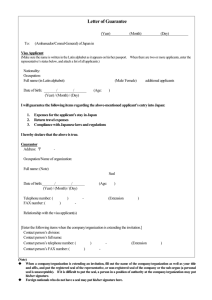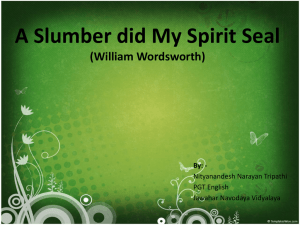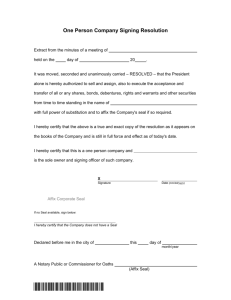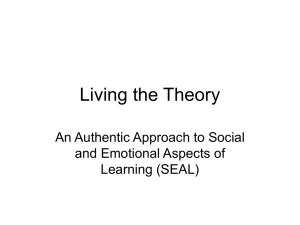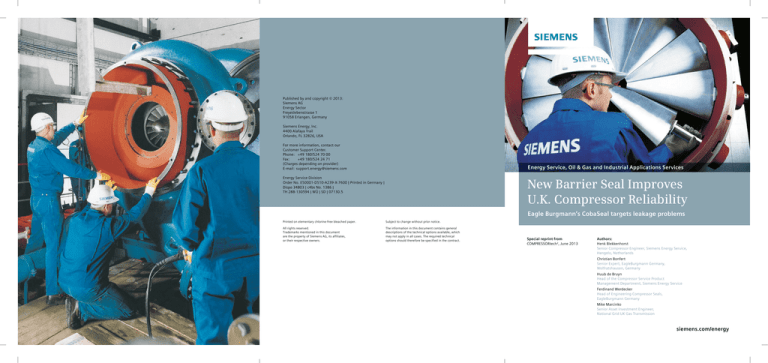
Published by and copyright © 2013:
Siemens AG
Energy Sector
Freyeslebenstrasse 1
91058 Erlangen, Germany
Siemens Energy, Inc.
4400 Alafaya Trail
Orlando, FL 32826, USA
For more information, contact our
Customer Support Center.
Phone: +49 180/524 70 00
Fax: +49 180/524 24 71
(Charges depending on provider)
E-mail:support.energy@siemens.com
Energy Service, Oil & Gas and Industrial Applications Services
Energy Service Division
Order No. E50001-D510-A239-X-7600 | Printed in Germany |
Dispo 34803 | c4bs No. 1386 |
TH 288-130594 | WÜ | SD | 07130.5
New Barrier Seal Improves
U.K. Compressor Reliability
Eagle Burgmann’s CobaSeal targets leakage problems
Printed on elementary chlorine-free bleached paper.
Subject to change without prior notice.
All rights reserved.
Trademarks mentioned in this document
are the property of Siemens AG, its affiliates,
or their respective owners.
The information in this document contains general
descriptions of the technical options available, which
may not apply in all cases. The required technical
options should therefore be specified in the contract.
Special reprint from
COMPRESSORtech², June 2013
Authors:
Henk Blekkenhorst
Senior Compressor Engineer, Siemens Energy Service,
Hengelo, Netherlands
Christian Bonfert
Senior Expert, EagleBurgmann Germany,
Wolfratshausen, Germany
Huub de Bruyn
Head of the Compressor Service Product
Management Department, Siemens Energy Service
Ferdinand Werdecker
Head of Engineering Compressor Seals,
EagleBurgmann Germany
Mike Marcinko
Senior Asset Investment Engineer,
National Grid UK Gas Transmission
siemens.com/energy
New Barrier Seal Improves U.K.
CobaSeal
Compressor Reliability > EagleBurgmann’s
targets leakage problems
rity of the compressor. If the seal
performance degrades, compressor
functionality is compromised.
EagleBurgmann, a specialist in industrial seal technology, developed
CobaSeal and initially installed it in
collaboration with U.K. gas network
operator National Grid and compressor manufacturer Siemens Energy.
EagleBurgmann said conventional sealing solutions have served
gas producers and distributors well
enough, but its new coaxial barrier
seal can improve compressor availability in gas liquefaction, gas transmission or any gas compressor application.
It said that several months of field
operations have confirmed that the
CobaSeal is more robust than older
seal types, is consistently reliable under all operating conditions and provides cost savings in the form of reduced nitrogen gas consumption.
n The compressor shaft prior to new seal installation.
E
agleBurgmann and Siemens
have reported the successful application of the former’s
CobaSeal, a rotating ring made of
ductile material and a spring-loaded
stationary face made of silicon carbide.
The companies noted that centrifugal compressor performance and
availability is closely related to the effectiveness of shaft sealing technology.
The shaft seal creates an impermeable barrier between the pressurized gas supply and unpressurized
ambient environment, preventing
pressure loss and contamination of
the former and protecting the integ-
JUNE 2013
CT195.indd 1
Oil leakage
National Grid’s Nether Kellet booster station near Manchester uses dual
gas-turbine driven Siemens STCCP centrifugal compressors with the
overhung impeller design widely used
in gas transmission.
The shaft sealing technology, a dry
gas seal in tandem arrangement with
n The seal function of the
EagleBurgmann CobaSeal
during dynamic operation
is shown.
ComprEssortech2
7/1/13 12:03 PM
a nitrogen-buffered carbon ring barrier
seal, has been the industry standard.
The dry gas seal performs the principal sealing function, while the carbon ring seal protects the dry gas seal
against bearing oil contamination and
guards against compressor gas contamination of the bearing brackets.
“At Nether Kellet, bearing oil leakage over the existing barrier seal was
contaminating the dry gas seal, causing an undesirable level of unplanned
compressor down time as well as a
loss of nitrogen pressure during pressurized standstill periods,” said Ferdinand Werdecker, head of compressor
seals engineering at EagleBurgmann.
“The loss of pressure resulting from
the distortion of the carbon ring segments of the seals is linked to low pressure cycling in the pipeline. Low pressure cycling is part of normal pipeline
operations and is unavoidable.”
CobaSeal solution
In 2010, National Grid and Siemens
Energy asked EagleBurgmann to help
develop a better solution. The customers envisioned a barrier seal design that
would tolerate vibrations from high gas
film stiffness and assure contact-free
operations in all operating modes.
They also wanted the design to be
sufficiently robust to eliminate the issue
of broken sealing rings. There would be
no oil leakage during standstill or low
roll operations, gas leakage prevention
would be assured, and the new design
would boast very low nitrogen purge
gas consumption and fluctuation, thereby reducing operating costs.
Nitrogen is used at a minimum temperature of -122°F (-50°C) to ensure
the carbon rings have sufficient sliding capability for the aerostatic barrier
seal to achieve liftoff from the compressor shaft after stoppages.
EagleBurgmann said its solution
was an industry first: a conventional
dry gas seal in tandem with the newly
designed coaxial barrier-type seal,
which substitutes for the existing carbon ring seal.
Similar to a dry gas seal, the CobaSeal has a rotating ring made of ductile
material and a spring-loaded stationary
face made of silicon carbide, both covered with a high-performance coating.
JUNE 2013
CT195.indd 2
n This is the leakage rate comparison between
CobaSeal and conventional barrier seals.
The nitrogen separation gas is routed into the seal by using axial bores
through the stationary face into the
middle of the rotating seat. The purge
gas then separates into two leakage
flows: one to the inner diameter towards the secondary vent; the other
to the outer diameter of the seal face
towards the bearing chamber.
Contact eliminated
The aerostatic liftoff design separates
the rotating and stationary seal faces as
soon as the CobaSeal is pressurized
and leads to a wear-free operation.
The stiff gas film eliminates the risk
of contact between the rotating ring and
stationary seal face during irregular operations such as axial vibrations or micromovements of the compressor shaft.
The CobaSeal has no restrictions
with regard to “slow roll,” “turning gear”
and “coast down” operations of the compressor that are integral to the demanddriven requirements of a major gas delivery network.
EagleBurgmann said the design allows operating pressure of up to 145
psig (10 barg) in the vent line combined with differential pressure control, which is an additional safeguard
against a total failure of the tandem
seal arrangement. Also, the risk of
process gas leakage towards the
bearing brackets is eliminated.
The design underwent extensive
shop testing, including the simulation of
upset conditions as well as operations
at maximum design specification.
The seal was tested first for EagleBurgmann’s specifications and then
subjected to a witness and acceptance test created for field conditions
at National Grid.
Werdecker said all tests were successful, including the simulation of a
total failure of the dry gas seal in combination with the pressure-controlled
supply of the coaxial seal barrier.
“After all testing, the seat and faces
of the tested coaxial seal were in likenew condition,” Werdecker said. “There
were no contact marks, demonstrating
that the maintenance of separation,
essential for extended safe, continuous
operations, worked as intended.”
most notably achieving improved
compressor availability with extended
maintenance intervals. Since installation, unplanned compressor downtime
has basically been zero,” he said.
Mike Marcinko, National Grid’s responsible asset engineer, agreed. “In
general, the operation of the CobaSeal is already proving to be a success,”
he said. “There has been a lot of startstop operating including emergency
shutdown trips and it has endured the
harshest of tests: performance testing of the compressor during which
time the actual surge line was plotted.
There has not been one issue with its
operation since installation.”
EagleBurgmann said nitrogen consumption is less than half of the rate
for a carbon ring seal, in line with
results from predelivery testing. And
there has been no evidence of lube
oil in the secondary vent line of the
compressor. All of this suggests National Grid can expect wear-free seal
operation with maintenance intervals
extended up to 10 years.
The company said its CobaSeal
design can be adapted to all stan-
n Cross section drawing depicts a typical dry gas seal plus barrier seal
(EagleBurgmann PDGS and CobaSeal).
dard seal cavities. Siemens Energy
has certified the design for use with
its compressors and EagleBurgmann
REPRINTED FROM JUNE 2013 Compressortech2
plans to have it certified by other compressor manufacturers for applications throughout the industry. CT2
Copyright Diesel & Gas Turbine Publications
Printed in U.S.A.
Field results
That has continued to be the case
at the Nether Kellet station since the
August 2011 installation of a CobaSeal on a compressor with a 4 in. (102
mm) shaft circumference.
“The unit has been subjected to a
wide range of operational conditions including surge trials, and normal starts
and stops, both running and starting
trips, and has clocked in excess of 1300
operating hours,” said Huub de Bruijn,
head compressor service product manager at Siemens Energy.
“From an operational standpoint, the
coaxial barrier seal has done exactly
what National Grid hoped to achieve:
ComprEssortech2
7/1/13 12:03 PM
CT195.indd 3
7/1/13 12:03 PM




